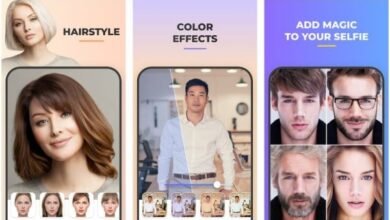Exploring hdhub4u.spa: Your Gateway to High-Definition Entertainment

In the rapidly evolving world of digital streaming, platforms like hdhub4u.spa have emerged as go-to destinations for cinephiles seeking instant access to movies and shows. Offering an expansive library of high-definition content across genres, languages, and formats, this platform caters to diverse viewing preferences. While its user-friendly interface and vast catalog make it appealing, it’s crucial to navigate such sites with awareness of legal and security implications. This article unpacks what hdhub4u.spa offers, its features, and key considerations for users.
Key Features of hdhub4u.spa
-
Extensive Content Library
hdhub4u.spa hosts a massive collection of movies, TV series, documentaries, and web shows, spanning Hollywood blockbusters, Bollywood hits, regional cinema, and international titles. The platform emphasizes HD (720p/1080p) and 4K resolutions, ensuring crisp visuals and immersive audio. Content is categorized by genre, release year, language, and popularity, enabling effortless discovery. Regular updates ensure users access the latest releases shortly after their theatrical or OTT premieres. -
User Experience & Accessibility
The site’s minimalist design prioritizes functionality: a robust search bar, intuitive filters, and a clean layout eliminate clutter. Users can stream content without mandatory registrations, though occasional ad interruptions may occur. Mobile responsiveness allows seamless viewing on smartphones, tablets, or desktops. Subtitles in multiple languages enhance accessibility for global audiences, while brief synopses and IMDb-style ratings aid decision-making. -
Cost-Free Streaming Model
Unlike subscription-based services (Netflix, Prime Video), hdhub4u.spa operates entirely free of charge. Revenue is generated through third-party advertisements displayed during browsing or playback. While this democratizes access, it also raises concerns about ad quality and potential exposure to malicious pop-ups or redirects. -
Technical Performance & Reliability
Leveraging multi-server hosting, the platform ensures high-speed streaming with minimal buffering. Adaptive bitrate technology adjusts video quality based on the user’s internet speed. However, server downtimes or dead links are occasional drawbacks, reflecting the volatility common among free streaming hubs.
Legal and Security Considerations
Legality: hdhub4u.spa operates in a legal gray area. It hosts copyrighted content without explicit licensing agreements, placing it at odds with global piracy laws (such as the DMCA in the U.S.). Accessing such content may violate local regulations, potentially exposing users to fines or ISP warnings.
Security Risks: Free streaming sites are notorious for embedding malware in ads or redirects. hdhub4u.spa is no exception—users might encounter phishing scams, crypto-mining scripts, or drive-by downloads. Employing ad-blockers, VPNs, and updated antivirus software is strongly advised.
Ethical Impact: Piracy undermines revenue for creators, affecting the entertainment ecosystem. Legal alternatives like Tubi (ad-supported free tier) or Crackle offer licensed content with fewer risks.
Conclusion
hdhub4u.spa delivers undeniable convenience for HD entertainment seekers, combining a vast catalog with zero-cost access. Its streamlined interface and frequent updates further enhance its appeal. However, these benefits come with significant caveats: legal vulnerabilities, security threats, and ethical dilemmas. For risk-averse viewers, exploring licensed ad-supported platforms remains a safer, sustainable choice. As digital consumption grows, informed decisions—balancing accessibility with responsibility—are paramount.
Frequently Asked Questions (FAQ)
Q1: Is hdhub4u.spa legal to use?
A: No. The site distributes copyrighted material without authorization, violating intellectual property laws in most countries. Users could face legal repercussions depending on local enforcement.
Q2: Does hdhub4u.spa require a subscription?
A: No, it’s entirely free. Revenue comes from ads, which may be intrusive or risky.
Q3: Can I download content from hdhub4u.spa?
A: While some links may offer downloads, doing so heightens security risks and legal exposure. Avoid downloading files from unverified sources.
Q4: How can I protect myself if using this site?
A: Use a reputable VPN to mask your IP, install ad-blockers (uBlock Origin), and run antivirus software. Never share personal data or disable browser security settings.
Q5: Are there legal alternatives to hdhub4u.spa?
A: Yes! Consider free, ad-supported platforms like Pluto TV, Plex, or YouTube Movies. For paid options, Netflix, Disney+, and Amazon Prime Video offer extensive libraries legally.
Q6: Why does hdhub4u.spa frequently change domains?
A: To evade legal takedowns, piracy sites often switch domains (e.g., .spa, .com, .net). This also makes them harder to trace and more unstable for users.



